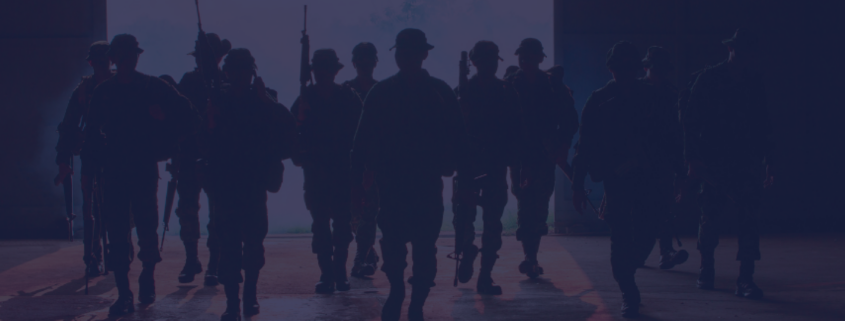“Walk With Me” A Story of Leadership by Example
By Rob Smith, SPC, PMP, PMI-ACP, CSM, PPO, ICP-ACC, Senior Practitioner and Lean Agile Coach, PhoenixTeam
Life lessons learned from active duty military service.
“Walk with me” were the first words my first commander, Captain Dave Overton, uttered when I met him for the first time in our Artillery Battalion motor pool in Camp Casey, Korea. It was the spring of 1994, and I was a brand-new second lieutenant straight out of the Field Artillery Officer Basic Course. The very next words out of his mouth were “wrong side lieutenant,” referring to the fact that I was walking on his right-hand side, a position of honor reserved for the highest-ranking person of a group when walking together. I missed this fact during my four years in the Reserve Officers’ Training Corps (ROTC) at the University of Miami, where I was most likely at the beach, but that is a different story.
I was now over 7,600 miles from the beaches of Miami, and as I repositioned myself to the Capitan’s left side, I thought, “What have I gotten myself into?” The thought reoccurred in my head as I tried to keep pace with my new commander, who continued to fill me in on the significant challenges faced by the individuals assigned to me in the Fire Direction Center – the brains of the Artillery Unit. As he talked and I soaked in as much information as possible, we stopped by each Section where troops were conducting maintenance on their vehicles and equipment. At each stop, Captain Overton engaged in light-hearted conversation, asked individuals questions and spot-checked various pieces of equipment while pointing out things I should look for in my future inspections. As we continued through each Section, I began a mental assessment of the organization and a running list of impediments preventing soldiers from properly maintaining their equipment.
Captain Overton was on the same page; as soon as we finished the walkthrough, he gathered the unit leadership for an informal meeting to discuss his findings and coordinate a plan of action to remedy the most pressing issues. I didn’t know then that Captain Overton was almost as new as I was, having only arrived a month earlier. Surprisingly, this was his first time leading the unit through recovery operations after a field exercise. He used this walkthrough to assess the unit, align expectations, and identify and remove obstacles hindering the unit from achieving mandatory standards.
That spring day in 1994 was a turning point when I learned the power of leaders who trooped the line, spot-checking and inspecting work as it was getting underway. Through Captain Overton, I experienced the impact of leading by example— mentoring and guiding versus directing—all within the first few hours of my earliest assignment on active duty. The lesson was reinforced five days later when we aced an extensive formal inspection from our higher headquarters commander (my boss’s boss) and his staff. Years later, I learned there was a civilian equivalent to trooping the line; yes, you guessed it, it’s called a Gemba Walk!
To this day, I get chills up my spine when I see leaders leading by example and trooping the line. Whether on distant battlefields, in the corporate office, or in a virtual team room, it is a multi-faceted, powerful tool that helps leaders establish standards, ensure those standards are enforced, and identify impediments and opportunities for improvement. While all of those are important things for a leader and an organization, the upshot of trooping the line is employee motivation and engagement. This simple act of engaging with the team as they work, observing progress, and listening to their opinions and thoughts on how and where to improve demonstrates the leader’s care and respect for their workforce. As a result, synergy and transparency lead to better communication and more efficient and impactful outcomes.
I didn’t realize at the time just how valuable this lifelong lesson would be— throughout my service, in my civilian life, and particularly my professional career after retiring from the military. Strong leadership skills are synonymous with success. Leadership style can make or break an organization’s ability to deliver value. Since that day in April 1994, I’ve honed in on what I learned, growing as a leader through experience, and partially attribute my leadership methods to Captain Overton. “Walk with me….” Today, these skills play a role in my success every day, working within the Phoenix Village of companies among my fellow Veteran team members who share the same mindset. Strong, emotionally intelligent leadership is the cornerstone of what we do, setting us apart from the rest to provide exceptional results for our clients that exceed expectations.


